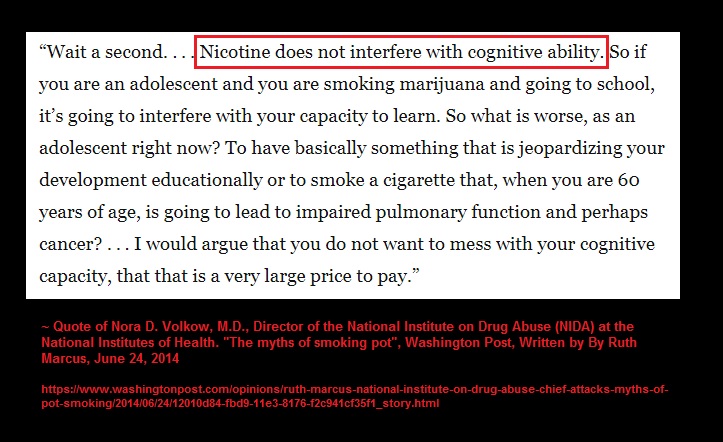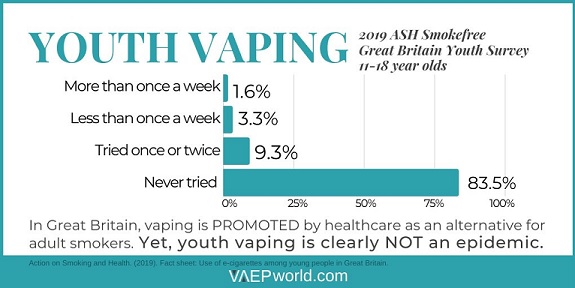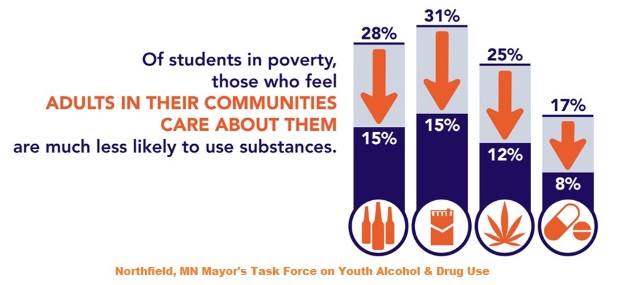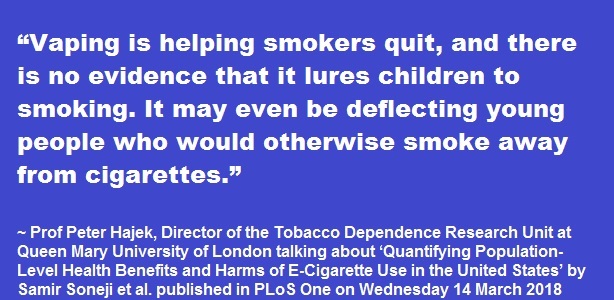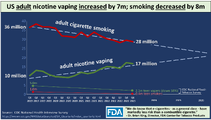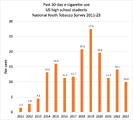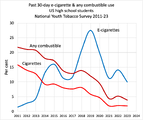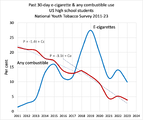ENDS Youth & Young Adults: Difference between revisions
No edit summary |
|||
| (3 intermediate revisions by the same user not shown) | |||
| Line 175: | Line 175: | ||
*Acknowledgement: The author is grateful to the National Institutes of Health for a grant supplement (to parent grant R01CA190444-04; PI: Delnevo) that supported this work. | *Acknowledgement: The author is grateful to the National Institutes of Health for a grant supplement (to parent grant R01CA190444-04; PI: Delnevo) that supported this work. | ||
===2020: Perverse Psychology How Anti-Vaping Campaigners Created the Youth Vaping “Epidemic”=== <!--T:61--> | ===2020: [https://cei.org/studies/perverse-psychology/ Perverse Psychology How Anti-Vaping Campaigners Created the Youth Vaping “Epidemic”]=== <!--T:61--> | ||
<!--T:62--> | <!--T:62--> | ||
| Line 183: | Line 183: | ||
=Age Restrictions= | =Age Restrictions= | ||
===2023: [https://isfe.uky.edu/sites/ISFE/files/research-pdfs/Effects%20of%20E-Cigarette%20Minimum%20Legal%20Sales%20Ages%20on%20Youth%20Tobacco%20Use%20in%20the%20US_Working%20Paper_0.pdf Effects of E-Cigarette Minimum Legal Sales Ages on Youth Tobacco Use in the United States]=== | |||
*"Using an estimator designed to correct for dynamic heterogeneity in treatment effects, e-cigarette MLSAs are estimated to reduce lifetime e-cigarette use by approximately 25% and increase daily cigarette use and daily cigar use by approximately 35%. Therefore, these MLSAs operate as intended in reducing e-cigarette use, although at the expense of more dangerous combustible tobacco use. The Food and Drug Administration should consider the impact of e-cigarette availability in reducing youth combustible tobacco use as an important public health benefit of e-cigarettes in their regulatory activity." | |||
**Citation: Michael F. Pesko, 2023. "Effects of e-cigarette minimum legal sales ages on youth tobacco use in the United States," Journal of Risk and Uncertainty, Springer, vol. 66(3), pages 261-277, June. DOI: 10.1007/s11166-022-09402-y | |||
***Acknowledgment: Dr. Pesko was supported by R01DA045016 from the National Institute on Drug Abuse of the National Institutes of Health and by a grant from the Institute for the Study of Free Enterprise at the University of Kentucky. | |||
===2019: [https://www.ncbi.nlm.nih.gov/pmc/articles/PMC7051858/ E-cigarette minimum legal sale age laws and traditional cigarette use among rural pregnant teenagers]=== | ===2019: [https://www.ncbi.nlm.nih.gov/pmc/articles/PMC7051858/ E-cigarette minimum legal sale age laws and traditional cigarette use among rural pregnant teenagers]=== | ||
*"This paper suggests that increases in teen prenatal cigarette smoking may be an unintended consequence of ENDS MLSAs among rural teens. Increases in prenatal smoking were entirely accounted for by pre-pregnancy smokers, suggesting that the mechanism through which ENDS MLSAs affected prenatal smoking was by reducing smoking cessation rather than by causing new initiation of cigarette smoking during pregnancy. " | *"This paper suggests that increases in teen prenatal cigarette smoking may be an unintended consequence of ENDS MLSAs among rural teens. Increases in prenatal smoking were entirely accounted for by pre-pregnancy smokers, suggesting that the mechanism through which ENDS MLSAs affected prenatal smoking was by reducing smoking cessation rather than by causing new initiation of cigarette smoking during pregnancy." | ||
**Citation: Pesko MF, Currie JM. E-cigarette minimum legal sale age laws and traditional cigarette use among rural pregnant teenagers. J Health Econ. 2019 Jul;66:71-90. doi: 10.1016/j.jhealeco.2019.05.003. Epub 2019 May 13. PMID: 31121389; PMCID: PMC7051858. | **Citation: Pesko MF, Currie JM. E-cigarette minimum legal sale age laws and traditional cigarette use among rural pregnant teenagers. J Health Econ. 2019 Jul;66:71-90. doi: 10.1016/j.jhealeco.2019.05.003. Epub 2019 May 13. PMID: 31121389; PMCID: PMC7051858. | ||
***Acknowledgment: We appreciate helpful comments from Michael French and | ***Acknowledgment: We appreciate helpful comments from Michael French and participants at the 2016 American Society for Health Economists conference. We thank Joanna Seirup for excellent data management. Research reported in this publication was supported by the National Institute on Drug Abuse of the National Institutes of Health under Award Number R01DA045016 (PI: Michael Pesko), P30DA040500 (PI: Bruce Schackman), and R01DA039968 (PI: Dhaval Dave). The content is solely the responsibility of the authors and does not necessarily represent the official views of the National Institutes of Health | ||
*See also: [https://news.gsu.edu/2019/07/11/e-cigartte-legal-age-regulation-teen-smokers/ E-cigarette Regulations Increase Prenatal Cigarette Use Among Teen Smokers, Study Shows] | *See also: [https://news.gsu.edu/2019/07/11/e-cigartte-legal-age-regulation-teen-smokers/ E-cigarette Regulations Increase Prenatal Cigarette Use Among Teen Smokers, Study Shows] | ||
===2019: [https://www.ncbi.nlm.nih.gov/pmc/articles/PMC6377803/ The Effects of E-Cigarette Minimum Legal Sale Age Laws on Youth Substance Use]=== | |||
*"Taken together, our findings suggest a possible unintended effect of e-cigarette MLSA laws—rising cigarette use in the short term while youth are restricted from purchasing e-cigarettes." | |||
**Citation: Dave D, Feng B, Pesko MF. The effects of e-cigarette minimum legal sale age laws on youth substance use. Health Econ. 2019 Mar;28(3):419-436. doi: 10.1002/hec.3854. Epub 2019 Jan 15. PMID: 30648308; PMCID: PMC6377803. | |||
***Acknowledgment: We gratefully appreciate comments from Abigail Friedman, Rahi Abouk, and others at the 2017 International Society for Health Economists (iHEA) conference. We also gratefully acknowledge Amanda Shawky for editorial assistance. | |||
***Funding: Research reported in this publication was supported by the National Institute on Drug Abuse of the National Institutes of Health under Award Number R01DA039968 (PI: Dhaval Dave) and R01DA045016 (PI: Michael Pesko) | |||
===2016: [https://pubmed.ncbi.nlm.nih.gov/26971853/ The influence of electronic cigarette age purchasing restrictions on adolescent tobacco and marijuana use]=== | ===2016: [https://pubmed.ncbi.nlm.nih.gov/26971853/ The influence of electronic cigarette age purchasing restrictions on adolescent tobacco and marijuana use]=== | ||
| Line 195: | Line 206: | ||
***(Full study behind paywall, can't see information on study funding) | ***(Full study behind paywall, can't see information on study funding) | ||
===2015: | ===2015: [https://conference.nber.org/confer/2015/SI2015/HE/Friedman.pdf How does electronic cigarette access affect adolescent smoking?]=== | ||
*Abstract: “Understanding electronic cigarettes’ effect on tobacco smoking is a central economic and policy issue. This paper examines the causal impact of e-cigarette access on conventional cigarette use by adolescents. Regression analyses consider how state bans on e-cigarette sales to minors influence smoking rates among 12 to 17 year olds. Such bans yield a statistically significant 0.9 percentage point increase in recent smoking in this age group, relative to states without such bans. Results are robust to multiple specifications as well as several falsification and placebo checks. This effect is both consistent with e-cigarette access reducing smoking among minors, and large: banning electronic cigarette sales to minors counteracts 70 percent of the downward pre-trend in teen cigarette smoking for a given two-year period.” | |||
**Citation: Friedman AS. How does electronic cigarette access affect adolescent smoking? J Health Econ. 2015 Dec;44:300-8. doi: 10.1016/j.jhealeco.2015.10.003. Epub 2015 Oct 19. PMID: 26583343. | |||
***Acknowledgement: I am grateful to David Cutler, Richard Frank, Claudia Goldin, Frank Sloan, Jody Sindelar, Martin Anderson, Sebastian Bauhoff, Shivaani Prakash, Mark Schlesinger, and Sam Richardson for helpful comments and discussion, and to the Radcliffe Institute for Advanced Study, for fellowship funding that helped support this research. | |||
Abstract: “Understanding electronic cigarettes’ effect on tobacco smoking is a central economic and policy issue. This paper examines the causal impact of e-cigarette access on conventional cigarette use by adolescents. Regression analyses consider how state bans on e-cigarette sales to minors influence smoking rates among 12 to 17 year olds. Such bans yield a statistically significant 0.9 percentage point increase in recent smoking in this age group, relative to states without such bans. Results are robust to multiple specifications as well as several falsification and placebo checks. This effect is both consistent with e-cigarette access reducing smoking among minors, and large: banning electronic cigarette sales to minors counteracts 70 percent of the downward pre-trend in teen cigarette smoking for a given two-year period.” | |||
=Young Adults= <!--T:69--> | =Young Adults= <!--T:69--> | ||
Latest revision as of 21:44, 29 December 2024
Studies, Surveys, Papers, Case Studies, and other resources with information about the use of ENDS products by youth and young adults
- Sometimes it's necessary to view the PDF version to access the full study.
- If you'd prefer someone else add a study to a topic, there is a subject section called "Suggested studies to add to this page". You may put the link in that section for one of the regular page editors to address. Directions for page editors are at the bottom of the page.
Addiction / Dependence
Please see this page for addiction/dependence information
Marketing/Advertising/Packaging
- Results: "Noticing fruit flavors (AOR = 1.67 and 1.28) and fruit images (AOR = 1.53 and 1.21) was positively associated with having any e-cigarette product appeal and switching interest. Noticing price promotions (AOR = 1.23) was positively associated with product appeal. In contrast, noticing nicotine warnings (AOR = 0.74 and 0.86), smoker-targeted claims (AOR = 0.78 and 0.89), and tobacco flavors (AOR = 0.92 and 0.90) was negatively associated with product appeal and switching interest."
Flavors
Please see this page for flavor (flavour) information
Gateway
Please see this page for gateway information:
Youth Use / Risky Behaviors / ACE’s
- Purpose: Sexual and gender minority (SGM) young adults report disproportionately higher rates of tobacco and nicotine product use. This study assessed the role of adverse childhood experiences (ACEs) in nicotine and tobacco product use among SGM young adults. Methods: A cross-sectional survey was administered to 11,694 college students (ages 18-29 years) between 2017 and 2018 in California, Minnesota, and Texas. Results: For every additional ACE reported, the odds of cigarette, e-cigarette, and dual use increased for all students, with significantly higher past 30-day cigarette use among ACE-exposed SGM students. Conclusion: ACEs are an important contributing factor to tobacco-related disparities facing SGM groups.
- Citation: Grigsby TJ, Schnarrs PW, Lunn MR, Benjamin SM, Lust K, Forster M. Adverse Childhood Experiences and Past 30-Day Cigarette and E-Cigarette Use Among Sexual and Gender Minority College Students. LGBT Health. 2021 Aug-Sep;8(6):433-438. doi: 10.1089/lgbt.2020.0456. Epub 2021 Jun 15. PMID: 34129400.
2021: Testimony in Netherlands pertaining to a potential flavour / flavor ban: Regulation of e-cigarette flavours – a response
- Signed by 24 experts from around the world
- Covers 12 key points including risky behaviors
2020: Up in Smoke: Exploring the Relationship between Bullying Victimization and E-Cigarette Use in Sexual Minority Youths
Conclusions/Importance: These findings suggest that sexual minority students who report cyberbullying victimization may use cigarette and e-cigarette products more than their non-cyberbullied peers.
2020: Changes from 2017 to 2018 in e-cigarette use and in ever marijuana use with e-cigarettes among US adolescents: analysis of the National Youth Tobacco Survey
Frequent and daily e-cigarette use was by far lower in never-smokers compared with ever-smokers.
2020: 'Vaping and fidget-spinners': A qualitative, longitudinal study of e-cigarettes in adolescence
Vaping in the study represented a time-limited trend rather than a steady user pattern. Drivers out of vaping were changes in peer-group perceptions, diminished novelty and lack of addiction as the youth vaped non-nicotine-containing e-liquids. In this study I have found evidence that e-cigarettes or vaping devices can represent fashionable experimentation rather than steady user patterns.
2019: Epidemic of Youth Nicotine Addiction? What does the National Youth Tobacco Survey reveal about high school e-cigarette use in the USA?
By Martin J Jarvis, Robert J West, Jamie Brown Shows the relation of youth usage to youth that had a previous addiction to cigarettes Blog: The 2018 American Teen Vaping Epidemic, Recalculated
2016: E-Cigarette Uptake Amongst UK Youth: Experimentation, but Little or No Regular Use in Nonsmokers
Letter
2016: Survey on the use of electronic cigarettes and tobacco among children in middle and high school
RESULTS: Among the students, 56% had tried an electronic cigarette at least once (boys: 59.9%, girls: 49.3%; ranging from 31.3% for the 8th grade students to 66.1% for the 12th grades). However, only 3.4% reported that they used electronic cigarettes every day. Initiation of e-cigarette use in these teenagers was principally due to use by friends or triggered by curiosity and they usually choose fruit or sweet flavours initially. The majority could not give the concentration of nicotine in e-cigarettes that they used. Moreover, 61.5% of the students had ever tried tobacco and 22.3% were daily smokers. Our study found a strong link between vaping and smoking. 80% of the students who had ever tried conventional cigarettes (94% for the daily smokers) had also tried an electronic cigarette, versus 16% of the students who have never smoked. Few students (6.2%) used electronic cigarettes without smoking tobacco too. Usually, they have tried tobacco before trying an electronic cigarette. Only tobacco smokers seem to smoke electronic cigarettes with nicotine. CONCLUSION: Although our study shows that teenagers frequently try electronic cigarettes, it does not prove, for the moment, that vaping itself usually leads to nicotine addiction. However, as most of the teenagers are unable to tell if the electronic cigarette they are testing contains nicotine, it raises the possibility that they could be vulnerable to manipulation by the tobacco industry.
2016: Nicotine concentration of e-cigarettes used by adolescents
Adolescents reported using nicotine-free e-liquid (28.5%), nicotine e-liquid (37.4%), or not knowing their e-liquid nicotine concentration (34.1%). Nicotine users comprised more smokers and heavier e-cigarette users compared to nicotine-free e-liquid users and those who did not know their nicotine concentration.
2015: Associations between e-cigarette access and smoking and drinking behaviours (behaviors) in teenagers
Results: “One in five participants reported having accessed e-cigarettes (19.2%). Prevalence was highest among smokers (rising to 75.8% in those smoking >5 per day), although 15.8% of teenagers that had accessed e-cigarettes had never smoked conventional cigarettes (v.13.6% being ex-smokers). E-cigarette access was independently associated with male gender, having parents/guardians that smoke and students’ alcohol use. Compared with non-drinkers, teenagers that drank alcohol at least weekly and binge drank were more likely to have accessed e-cigarettes (adjusted odds ratio [AOR] 1.89, P < 0.001), with this association particularly strong among never-smokers (AOR 4.59, P < 0.001). Among drinkers, e-cigarette access was related to: drinking to get drunk, alcohol-related violence, consumption of spirits; self-purchase of alcohol from shops or supermarkets; and accessing alcohol by recruiting adult proxy purchasers outside shops.”
2014: Parent, Peer, and Executive Function Relationships to Early Adolescent E-Cigarette Use: A Substance Use Pathway?
Lifetime use prevalence was 11.0% for e-cigarettes, 6.8% for cigarettes, and 38.1% for alcohol. Free lunch and age were marginally related to e-cigarette use (p<.10). Parent e-cigarette ownership was associated with the use of all substances, while peer use was associated with gateway drug use (p’s<.05-.001). EF (Executive Function) deficits were associated with the use of all substances five times more likely than others to use e-cigarettes and over twice as likely to use gateway drugs. E-cigarette and gateway drug use may have common underlying risk factors in early adolescence, including parent and peer modeling of substance use, as well as EF deficits. Future research is needed to examine longitudinal relationships of demographics, parent and peer modeling, and EF deficits to e-cigarette use in larger samples, trajectories of e-cigarette use compared to use of other substances, and the potential of EF skills training programs to prevent e-cigarette use.
- Only two participants (< 1%) had previously tried e-cigarettes.
- Among those who had not tried e-cigarettes, most (67%) had heard of them. Awareness was higher among older and non-Hispanic adolescents.
- Nearly 1 in 5 (18%) participants were willing to try either a plain or flavored e-cigarette, but willingness to try plain versus flavored varieties did not differ.
- Smokers were more willing to try any e-cigarette than nonsmokers.
- Nonsmokers who had more negative beliefs about the typical smoker were less willing to try e-cigarettes.
- PDF Version
- Citation: Pepper, J. K., Reiter, P. L., McRee, A.-L., Cameron, L. D., Gilkey, M. B., & Brewer, N. T. (2013). Adolescent Males’ Awareness of and Willingness to Try Electronic Cigarettes. Journal of Adolescent Health, 52(2), 144–150. doi:10.1016/j.jadohealth.2012.09.014
- Acknowledgement: : Support for this study was provided by the American Cancer Society (MSRG-06-259-01-CPPB), the Cancer Control Education Program at UNC Lineberger Comprehensive Cancer Center (R25 CA57726), the National Institutes of Health (P50CA105632 and P30CA016058), and a NRSA in Primary Medical Care at the University of Minnesota (T32HP22239).
Youth and Regulations / Preventing Youth Use
- Gartner C. Drug Alcohol Rev. 2023 Jul;42(5):1298-1300. doi: 10.1111/dar.13666. Epub 2023 May 9. PMID: 37409355 No abstract available.
- But the first step to "solve a problem like youth vaping" is to define the problem. The opening statement "concerns about youth vaping are rising globally" isn't really enough for a scientific discussion, unless it's a discussion about media/political perceptions. In my view, the problem of youth vaping is primarily an aesthetic or political problem (and I agree, no one wants to see this), rather than a public health risk that should really justify strong interventions that will likely harm adults. This is because there are really two types of youth vaping: (1) frivolous experience, faddish, transitory and of little current or lasting consequence; (2) the uptake of vaping by young people who would otherwise smoke or have a high propensity to use nicotine. For these adolescents, vaping is likely beneficial - a harm-reduction diversion from smoking. So youth vaping, in public health terms, is a mix of inconsequential and beneficial. We've already seen how that played out in the US in a recent blog by Brad Rodu. So from a scientific and public health perspective, we need a clear-eyed public understanding of the (non-)problem, before we make trade-offs to solve this problem that may cause actual harm to adults. See Mendelsohn and Hall: What are the harms of vaping in young people who have never smoked?
- "Frequent vaping of nicotine by young people who have never smoked is uncommon and there is limited evidence so far that vaping has caused significant harms in this population. At a population level, the net benefits of vaping to adult and youth who smoke are likely to outweigh the feared harms of vaping to youth."
- Gartner provides a good discussion of the costs and ineffectiveness of addressing non-compliance with Australia's Byzantine system for accessing vapes legally, and draws out the important point that people will often comply with laws without extensive enforcement if they think the laws are just and proportionate. Laws that allow cigarettes to be available everywhere, but greatly restrict access to far safer alternatives for people who want to use them to quit smoking using their own money may not meet this test.
- Gartner dismisses a 'responsible retailer' initiative (from BAT), not on its merits but because it is "unlikely to reassure public health advocates", as if public health advocate reassurance is some sort of goal of policy. In Australia, the public health community is unlikely to be satisfied by much short of outright prohibition, but governments are elected to find working proportionate solutions to actual problems. However, she immediately notes that irresponsible retailing provides illicit under-the-counter sales, including to children - but concludes that regularising the consumer trade would not reduce youth uptake.
- She notes the pronounced anomaly in the availability of cigarettes and vaping products and recommends finding "new models of controlled supply for harmful products like cigarettes and NVPs" that will command enough public support to be self-enforcing. But what is the evidence that controlled supply doesn't have massive unintended consequences? Or that the use of coercive supply-side measures and enforcement are ever an effective and respectful way for the state to address demands for a substance? In this case, an almost benign and innocuous substance?
- Worth noting the FOIA release of internal papers of the Australian National Advisory Council on Alcohol and Other Drugs (ANACAD) assessing the Australian government's quasi-prohibition policies. Like a voice of sanity. See Colin Mendelson's blog summarising: Expert committee’s advice on vaping is dynamite to Butler’s prohibition model
- "Further restrictions will likely only make the problem worse and we’ll end up criminalising more people. Regulation that is too severe risks making smoking more attractive"
- Dunbar M, Setoji CM, Martino SC, Jensen D, Li R, Bialas A, Shadel WG. Addict Behav. 2023 Jun 19;145:107784. doi: 10.1016/j.addbeh.2023.107784. Online ahead of print. PMID: 37364525
- An experimental purchasing study of youth (11-20 years old) in a mock convenience store, examining different conditions with different flavor availabilities:
- Methods: The display of flavored tobacco products in the store was manipulated with these conditions: 1) tobacco, sweet, and menthol/mint flavors displayed; 2) only tobacco and menthol/mint displayed; and 3) only tobacco flavors displayed.co flavors displayed.
- Results: Study condition was not associated with intentions to use menthol/mint- sweet-flavored, or any flavor. Compared to the condition in which all flavored products were displayed, removing menthol/mint- and sweet-flavored products significantly increased future intentions to use tobacco-flavored vaping products (OR = 3.97, 95 % CI [1.01, 15.58], p < .05). This effect was only observed among adolescents with history of vaping (OR = 11.30, 95 % CI [1.42, 89.96], p = .02).
- The assumption behind flavor bans is that flavor availability will causally deter use among youth (especially non-using youth), which stems from the unproven assumption that because youth often use flavors, that flavors caused youth use. However, there is no evidence for this causation – youth might otherwise use tobacco flavor, as evidenced by youth using no-added-flavors cigarettes for decades previously. This is one of the first studies that evaluates the causality of flavor availability on youth use (another one was a Pinney paper finding that youth interest did not vary across flavor descriptors).
- The results are notable in their lack of causal associations, except in increasing the intention to use tobacco-flavored products among youth who already use e-cigarettes if there are no flavors available (i.e., migrating to the remaining available products). Especially notable is that flavor restrictions did not change intentions to use among non-users (which were already low), which calls into question the fundamental motivation behind flavor bans.
- The U.S. Food and Drug Administration (FDA) launched ‘The Real Cost Youth E-cigarette Prevention Campaign’ in late September 2018 as part of the Youth Tobacco Prevention Plan
- In addition to the digital campaign ads and posters, ‘The Real Cost’ campaign launched an immersive video game experience called ‘What’s In A Vape – The Real Cost’ on a website. This game was first launched in 2018 and was located in the WhatsInAVape.com website, which was linked to the main FDA campaign website; as of 2020, that website domain is no longer available and the game is no longer found on any of the FDA campaign web pages. This video game was not accessible through smartphones (the venue youth use the most) and was only available via computer.
- From the campaign ads on social media, a video game, and posters, we identified fear-based messaging as primary part of our content analysis. The fear messages of the ‘vape epidemic’ and deformed images of teens’ bodies were utilized as the main driver in digital campaign ads and a game as part of the e-cigarette prevention campaign.
- Based on our analysis, we found no evidence of positive messaging in all three main venues of the campaign. We did not find any message of hope, support, and empowerment in the campaign ads. We also could not find any positive role model messaging to demonstrate the desired and intended behavior change.
- The FDA campaign, ‘Real Cost Youth E-cigarette Prevention Campaign,’ aimed to educate youth about the potential risks of e-cigarettes by the repeated use of exaggerated fear appeals that target the youth audience. These sensationalized and exaggerated images and statements highlighted its fear-based campaign approach. With unrealistic and exaggerated images of teens having worm-like creatures crawling underneath their skins from vaping, the campaign ads lacked the credibility to elicit concerns of negative health effects. Fear tactics used in health promotion campaigns will likely be unsuccessful if the fear-based outcome seems to be an unlikely event.
- These fear appeals were employed in this campaign without additional messaging to promote self-efficacy for positive behavioral changes or to motivate youth to take action against vaping. This FDA campaign may have alienated the youth audience further by not engaging with them directly and not emphasizing the logic behind why youth e-cigarette use is increasing over the years.
- Campaigns with ineffective use of fear may produce an unwanted effect, such as making the target audience continue with their unhealthy behavior. Furthermore, exposure to these campaigns may even have boomerang effects. One study found that the frequent exposure to the campaign ads created a ‘meta-message’ among the audience that the youth drug use was prevalent and led to an increase in uses as a result.
- PDF Version
- Citation: Ziming Xuan & Jasmin N. Choi (2021) Content analysis of the use of fear in the real cost youth e-cigarette prevention campaign, Journal of Communication in Healthcare, DOI: 10.1080/17538068.2020.1860671
- For example, what to do if and when certain targeted regulations that would protect teenagers would also, by making it harder to vape, substantially increase smoking in the general population? This situation may be common, and, by pitting the health interests of the general population against those of teenagers, poses an ethical dilemma. This article argues philosophically that if such tradeoffs between the health interests of adolescents and those of the general population exist, morally it is both permissible and preferable to promote the health of the general population.
- PDF Version
- Citation: Eyal, Nir. “Rescuing Vapers Versus Rescuing Smokers: The Ethics.” Nicotine & tobacco research : official journal of the Society for Research on Nicotine and Tobacco vol. 23,1 (2021): 26-31. doi:10.1093/ntr/ntaa157
- Acknowledgement: The author is grateful to the National Institutes of Health for a grant supplement (to parent grant R01CA190444-04; PI: Delnevo) that supported this work.
It is reasonable for anti-tobacco advocates to worry about youth experimentation with nicotine, but the evidence is clear that their interventions have backfired and made the problem worse. Their attempts to dissuade teenagers from vaping increased their awareness of the behavior, made it more attractive, and convinced them that everyone around them was doing it. Anti-tobacco advocates argue that the government can end the “epidemic” by raising the minimum tobacco age to 21, banning non-tobacco e-cigarette flavors, and increasing funding for anti-vaping education. But, as this paper has demonstrated, these measures will not only fail, they will actually make matters worse by increasing the coolness of vaping and youth attraction to it. Teen vaping did not escalate despite the increased anti-vaping messaging. Adolescents’ curiosity and subsequent experimentation with vaping rose because of anti-vaping messaging.
Age Restrictions
- "Using an estimator designed to correct for dynamic heterogeneity in treatment effects, e-cigarette MLSAs are estimated to reduce lifetime e-cigarette use by approximately 25% and increase daily cigarette use and daily cigar use by approximately 35%. Therefore, these MLSAs operate as intended in reducing e-cigarette use, although at the expense of more dangerous combustible tobacco use. The Food and Drug Administration should consider the impact of e-cigarette availability in reducing youth combustible tobacco use as an important public health benefit of e-cigarettes in their regulatory activity."
- Citation: Michael F. Pesko, 2023. "Effects of e-cigarette minimum legal sales ages on youth tobacco use in the United States," Journal of Risk and Uncertainty, Springer, vol. 66(3), pages 261-277, June. DOI: 10.1007/s11166-022-09402-y
- Acknowledgment: Dr. Pesko was supported by R01DA045016 from the National Institute on Drug Abuse of the National Institutes of Health and by a grant from the Institute for the Study of Free Enterprise at the University of Kentucky.
- Citation: Michael F. Pesko, 2023. "Effects of e-cigarette minimum legal sales ages on youth tobacco use in the United States," Journal of Risk and Uncertainty, Springer, vol. 66(3), pages 261-277, June. DOI: 10.1007/s11166-022-09402-y
2019: E-cigarette minimum legal sale age laws and traditional cigarette use among rural pregnant teenagers
- "This paper suggests that increases in teen prenatal cigarette smoking may be an unintended consequence of ENDS MLSAs among rural teens. Increases in prenatal smoking were entirely accounted for by pre-pregnancy smokers, suggesting that the mechanism through which ENDS MLSAs affected prenatal smoking was by reducing smoking cessation rather than by causing new initiation of cigarette smoking during pregnancy."
- Citation: Pesko MF, Currie JM. E-cigarette minimum legal sale age laws and traditional cigarette use among rural pregnant teenagers. J Health Econ. 2019 Jul;66:71-90. doi: 10.1016/j.jhealeco.2019.05.003. Epub 2019 May 13. PMID: 31121389; PMCID: PMC7051858.
- Acknowledgment: We appreciate helpful comments from Michael French and participants at the 2016 American Society for Health Economists conference. We thank Joanna Seirup for excellent data management. Research reported in this publication was supported by the National Institute on Drug Abuse of the National Institutes of Health under Award Number R01DA045016 (PI: Michael Pesko), P30DA040500 (PI: Bruce Schackman), and R01DA039968 (PI: Dhaval Dave). The content is solely the responsibility of the authors and does not necessarily represent the official views of the National Institutes of Health
- Citation: Pesko MF, Currie JM. E-cigarette minimum legal sale age laws and traditional cigarette use among rural pregnant teenagers. J Health Econ. 2019 Jul;66:71-90. doi: 10.1016/j.jhealeco.2019.05.003. Epub 2019 May 13. PMID: 31121389; PMCID: PMC7051858.
- See also: E-cigarette Regulations Increase Prenatal Cigarette Use Among Teen Smokers, Study Shows
- "Taken together, our findings suggest a possible unintended effect of e-cigarette MLSA laws—rising cigarette use in the short term while youth are restricted from purchasing e-cigarettes."
- Citation: Dave D, Feng B, Pesko MF. The effects of e-cigarette minimum legal sale age laws on youth substance use. Health Econ. 2019 Mar;28(3):419-436. doi: 10.1002/hec.3854. Epub 2019 Jan 15. PMID: 30648308; PMCID: PMC6377803.
- Acknowledgment: We gratefully appreciate comments from Abigail Friedman, Rahi Abouk, and others at the 2017 International Society for Health Economists (iHEA) conference. We also gratefully acknowledge Amanda Shawky for editorial assistance.
- Funding: Research reported in this publication was supported by the National Institute on Drug Abuse of the National Institutes of Health under Award Number R01DA039968 (PI: Dhaval Dave) and R01DA045016 (PI: Michael Pesko)
- Citation: Dave D, Feng B, Pesko MF. The effects of e-cigarette minimum legal sale age laws on youth substance use. Health Econ. 2019 Mar;28(3):419-436. doi: 10.1002/hec.3854. Epub 2019 Jan 15. PMID: 30648308; PMCID: PMC6377803.
- Conclusion: “We document a concerning trend of cigarette smoking among adolescents increasing when ENDS become more difficult to purchase.”
- Pesko MF, Hughes JM, Faisal FS. The influence of electronic cigarette age purchasing restrictions on adolescent tobacco and marijuana use. Prev Med. 2016 Jun;87:207-212. doi: 10.1016/j.ypmed.2016.02.001. Epub 2016 Mar 10. PMID: 26971853.
- (Full study behind paywall, can't see information on study funding)
- Pesko MF, Hughes JM, Faisal FS. The influence of electronic cigarette age purchasing restrictions on adolescent tobacco and marijuana use. Prev Med. 2016 Jun;87:207-212. doi: 10.1016/j.ypmed.2016.02.001. Epub 2016 Mar 10. PMID: 26971853.
- Abstract: “Understanding electronic cigarettes’ effect on tobacco smoking is a central economic and policy issue. This paper examines the causal impact of e-cigarette access on conventional cigarette use by adolescents. Regression analyses consider how state bans on e-cigarette sales to minors influence smoking rates among 12 to 17 year olds. Such bans yield a statistically significant 0.9 percentage point increase in recent smoking in this age group, relative to states without such bans. Results are robust to multiple specifications as well as several falsification and placebo checks. This effect is both consistent with e-cigarette access reducing smoking among minors, and large: banning electronic cigarette sales to minors counteracts 70 percent of the downward pre-trend in teen cigarette smoking for a given two-year period.”
- Citation: Friedman AS. How does electronic cigarette access affect adolescent smoking? J Health Econ. 2015 Dec;44:300-8. doi: 10.1016/j.jhealeco.2015.10.003. Epub 2015 Oct 19. PMID: 26583343.
- Acknowledgement: I am grateful to David Cutler, Richard Frank, Claudia Goldin, Frank Sloan, Jody Sindelar, Martin Anderson, Sebastian Bauhoff, Shivaani Prakash, Mark Schlesinger, and Sam Richardson for helpful comments and discussion, and to the Radcliffe Institute for Advanced Study, for fellowship funding that helped support this research.
- Citation: Friedman AS. How does electronic cigarette access affect adolescent smoking? J Health Econ. 2015 Dec;44:300-8. doi: 10.1016/j.jhealeco.2015.10.003. Epub 2015 Oct 19. PMID: 26583343.
Young Adults
Moreover, if vape product sales were restricted to tobacco flavors, 39.1% of users reported being likely to continue using e-cigarettes but 33.2% were likely to switch to cigarettes. If vape product sales were entirely restricted, e-cigarette users were equally likely to switch to cigarettes versus not (~40%).
2020: Adverse Childhood Experiences (ACE) and Health Indicators in a Young Adult, College Student Sample: Differences by Gender
Approximately 51.7% of the sample reported at least one ACE We observed graded relationships between levels of ACE exposure and physical, mental, and behavioral health indicators including cigarette use, e-cigarette use, drinking and driving, obesity, lifetime depression, suicide ideation and attempt, non-suicidal self-injury, and lack of restful sleep. ACE-exposed females reported worse mental health status than ACE-exposed males while males reported more substance use than females. Most outcomes did not vary significantly by sex.
As adolescents cross the threshold to young adulthood, they encounter more opportunities to engage in or accelerate previously discouraged or prohibited behaviors. Young adults, therefore, are more apt to initiate cigarette smoking and, more importantly, to accelerate their use if they tried and experimented as an adolescent. This period of transition has been surprisingly neglected as an opportunity to prevent the progression of smoking and possibly other risky behaviors. Prevescalation provides a novel conceptual and practical focus for research and a target for intervention in young adults with the promise of a huge payoff averting the deleterious health effects caused by overwhelmingly by cigarette smoking
2016: A Randomized Trial Comparing the Effect of Nicotine Versus Placebo Electronic Cigarettes on Smoking Reduction Among Young Adult Smokers
Study subjects (n = 99) were young adult (21–35), current smokers A diverse young adult sample of current everyday smokers, who were not ready to quit, was able to reduce smoking with the help of ECs.
2015: Risky behaviors, e-cigarette use and susceptibility of use among college students
Conclusion: “More e-cigarette users report use of another nicotine product besides e-cigarettes as the first nicotine product used; this should be considered when examining whether e-cigarette use is related to cigarette susceptibility. Involvement in risky behaviors is related to e-cigarette use and susceptibility to e-cigarette use. Among college students, e-cigarette use is more likely to occur in those who have also used other tobacco products, marijuana, and/or alcohol.”
2015: Changes in use of cigarettes and non-cigarette alternative products among college students
RESULTS: The most prevalent products used by the entire sample at Wave 1 were cigarettes, followed by hookah, cigars/cigarillos/little cigars, and electronic cigarettes (e-cigarettes). At Wave 2, prevalence of e-cigarette use surpassed use of cigars/cigarillos/little cigars. Snus and chew/snuff/dip were relatively uncommon at both waves. Examination of change in use indicated that e-cigarette use increased across time among both current cigarette smokers and non-cigarette smokers. Prevalence of current e-cigarette use doubled across the 14-month period to 25% among current smokers and tripled to 3% among non-cigarette smokers. Hookah use also increased across time, but only among non-cigarette smokers, whereas it decreased among current cigarette smokers. Use of all other non-cigarette alternatives remained unchanged across time. Logistic regression analysis was used to examine the socio-demographic predictors of Wave 2 e-cigarette use, the only product that increased in use among both current cigarette smokers and non-cigarette smokers. Results indicated that Wave 1 current cigarette use and Wave 1 current e-cigarette use, but not gender, age, or race/ethnicity, were significantly associated with Wave 2 e-cigarette use.
2015: Electronic Cigarette Trial and Use among Young Adults: Reasons for Trial and Cessation of Vaping
Conclusion: …”We also see that about one third of former smokers and over 7% of never smokers report having tried e-cigarettes, and current use is 10% and 2% in these groups, respectively. Similar findings have led others to raise concerns that e-cigarette use is a threat to public health because it can lead to combustible tobacco use, presumably among those who otherwise would not have become smokers [2]. However, it is extremely rare for e-cigarette use to be the first exposure to nicotine in young adults. It was reported by fewer than 0.4% of the never smokers, and none of the current and former smokers. This may be a cohort effect, and e-cigarette use as the initial exposure to nicotine may become more common as younger cohorts, who are experimenting with vaping at higher and higher rates, mature [19]. Nevertheless, in this cohort, 99.6% of young adult never-smokers who tried e-cigarettes had previously used or experimented with another form of tobacco, suggesting that in these young adults tobacco is a gateway to e-cigarettes, rather than the reverse.”...
Youth - Nicotine Use
- A comprehensive rebuttal of the concerns about youth vaping from Drs. Mendelsohn and Hall, covering several different angles.
- How common is frequent vaping in never-smokers?
- Frequent vaping by young people who have never smoked is uncommon in western countries with a prevalence mostly under 2%.
- Measures of lifetime vaping (“even a puff”) or current vaping (at least once in the past 30-days) overestimate the prevalence of frequent vaping by those who have never-smoked because they include experimental and infrequent vaping which is the most common pattern of use in this group.
- Does vaping increase the risk of taking up smoking?
- Increases in youth vaping have been accompanied by an accelerated decline in smoking since vaping became popular in the US, UK, and New Zealand, suggesting either no overall gateway effect or at most, a small gateway effect that is outweighed by the much larger number moving from smoking to vaping.
- What are the known health effects of vaping by never-smokers?
- Nicotine itself represents minimal risk of serious harm in the doses commonly used in vaping. Nicotine does not cause cancer or lung disease and it has only a minor role in cardiovascular disease.
- Do never-smokers who vape become dependent on nicotine?
- Vaping can cause nicotine dependence in some young people who have never smoked. The evidence suggests, however, that this is a minority of cases, not, as the media often claim, “a new generation addicted to nicotine.”
- What about the risks for young smokers who take up vaping?
- Modelling studies suggest a net benefit from vaping to population health under all plausible scenarios. These models take into account harms from vaping (uptake by never-smoking youth and adults, the potential to increase smoking, inhibit smoking cessation and promote relapse) and benefits (cessation of smoking and diversion of those who would have otherwise taken up smoking).
- Policy measures to reduce youth vaping
- We need to recognize that overly restrictive policies intended to reduce youth vaping can have counterproductive results.
- Mendelsohn CP, Hall W. Int J Drug Policy. 2023 May 30;117:104064. doi: 10.1016/j.drugpo.2023.104064. Online ahead of print. PMID: 37263111 (No abstract available)
- Electronic cigarettes may have offset conventional smoking among US adolescents between 2010 and 2018 by maintaining the total nicotine use prevalence and diverting them from more harmful conventional smoking. Additionally, electronic cigarette users appear to initiate at older ages relative to conventional smokers, which is associated with lower risk.
Youth - What Risks Are They Taking?
- Almost half of teenagers who regularly use pot admit they've gotten behind the wheel while stoned. Overall, twice as many teens report driving under the influence of marijuana than admit to drinking and driving.
- As US states legalize medical and recreational marijuana use, teens may misperceive the risk of marijuana use4 and DAUM. More than 1 in 8 teen drivers reported DAUM (driving after using marijuana) in the past month.
- PDF Version
- Citation: Li L, Hu G, Schwebel DC, Zhu M. Analysis of US Teen Driving After Using Marijuana, 2017. JAMA Netw Open. 2020;3(12):e2030473. doi:10.1001/jamanetworkopen.2020.30473
- Acknowledgement: This research was supported by the National Institutes of Health (grant R01HD074594, 2013-2022).
Graphics
2014 Nora Volkow MD (NIDA) comparing youth nicotine use with marijuana use
2019 UK Youth Use
Children living in poverty have higher rates of substance use. Caring adults can help.
Professor Peter Hajek comment on the potential gateway effect
- US Vaping and smoking trends (youth and adult)
-
US nicotine vaping and smoking trends
- Vaping trend data 2011 to 2023
-
vaping trend data
-
Past e-cig use frequent and infrequent
-
Past 30 day e-cig and any tobacco use
-
Past 30 day e-cig and any combustable tobacco use
Suggested studies to add to this page
- These findings suggest dramatic successes in reducing youth smoking since the late 1990s, with more rapid declines in prevalence in the past decade.
- Healthy People’s 2030 goal for youth cigarette smoking, which uses the NYTS as its benchmark, has already been achieved and exceeded, years ahead of schedule.
- Concerns about a potential rise in adolescent cigarette use following the introduction of e-cigarettes to the U.S. market in the early 2010s are not supported by the data. In fact, the emergence of e-cigarettes has coincided with the most rapid declines in cigarette use over the past thirty years.
- Importantly, an emerging body of evidence suggesting that initiation of cigarette smoking is shifting from adolescence to young adulthood. However, the prevalence of cigarette smoking has also dramatically declined among young adults aged 18–24 from 26.8% in 2000 to 7.4% in 2020
- Cristine D. Delnevo, Andrea C. Villanti Int. J. Environ. Res. Public Health 2023, 20(19), 6866; https://doi.org/10.3390/ijerph20196866
- Funding: C.D.D. and A.C.V. were supported in part by a grant from the National Cancer Institute of the National Institutes of Health and the FDA Center for Tobacco Products (U54CA229973 and U01CA278695. The content is solely the responsibility of the authors and does not necessarily represent the official views of NIH, NCI or FDA.
2016 Adolescent caffeine consumption increases adulthood anxiety-related behavior and modifies neuroendocrine signaling and 2015 Caffeine triggers behavioral and neurochemical alterations in adolescent rats
While some rodent studies suggest impaired cognitive development from nicotine administration in adolescence (2016 Surgeon General’s Report) similar rodent studies exist for caffeine.
- See above 2016 Adolescent caffeine consumption increases adulthood anxiety-related behavior and modifies neuroendocrine signaling and 2015 Caffeine triggers behavioral and neurochemical alterations in adolescent rats. This finds similar impairments in adolescent rats, when fed caffeine. It may well be that there is greater sensitivity in rats to stimulants, either way since no such impairments have been found in humans we must question the usefulness of the rat model. Rats are not little people!
- "Educational achievement did not differ within twin pairs discordant for smoking, in adults and adolescents." Treur et al. "Smoking during adolescence as a risk factor for attention problems." (2015) Biol. psychiatry
- “The (inverse) IQ–smoking association disappeared after adjustments for shared environment and genetics.” Wennerstad, Karin Modig, et al. "Associations between IQ and cigarette smoking among Swedish male twins." Social science & medicine
- “Past smoking was not associated with significantly poorer performance than never smokers in any cognitive domain.”
Directions for page editors
- PAGE EDITORS - Please only add Studies, Surveys, Papers in this format to keep page consistent for all viewers.
- Topic
- Year (list new to old) Name of Study (In link format to the study)
- Note here if animal study (leave blank if not)
- Brief Summary
- Link to PDF Version
- Citation
- Acknowledgements (funded by, helped by)
- Keywords
- Other
